Intermediate Skateboarders: How to Choose the Right Skateboard
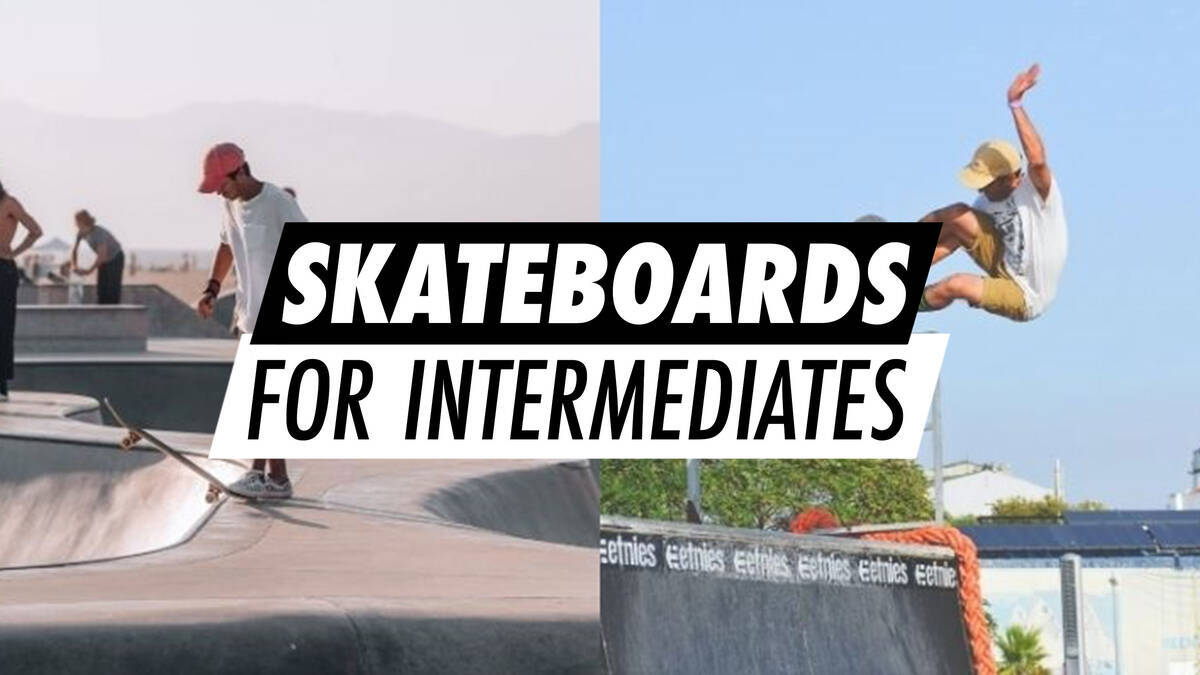
Whether upgrading your current setup with premium components or acquiring a new complete skateboard, this guide aims to assist intermediate skateboarders focused on enhancing their techniques and learning new tricks in selecting the ideal skateboard.
Overview
Overview
Skateboard Types: Tailoring Your Board to Your Style

All skateboards comprise a deck, two trucks, and four wheels, with differences in specifications and dimensions making it important to determine your skateboarding style.
Do you gravitate towards technical flip tricks, or do you also attempt large stair sets? What are your skateboarding preferences: street spots, skateparks, or transition skating such as flipping in bowls and ramps? Your skateboarding style plays a significant role in selecting a skateboard suited to your needs.
Regardless, diversifying skateboarding disciplines can prevent monotony. Having diverse boards for each style isn't necessary, but when obtaining a new skateboard, focus on your primary interest.
Skateboarding can be broadly divided into three key styles: street, park, and transition. Don't be confined by categories; even with a street-oriented setup, feel free to try out a bowl whenever you like!
Transition Skateboards: Pool & Vert Boards
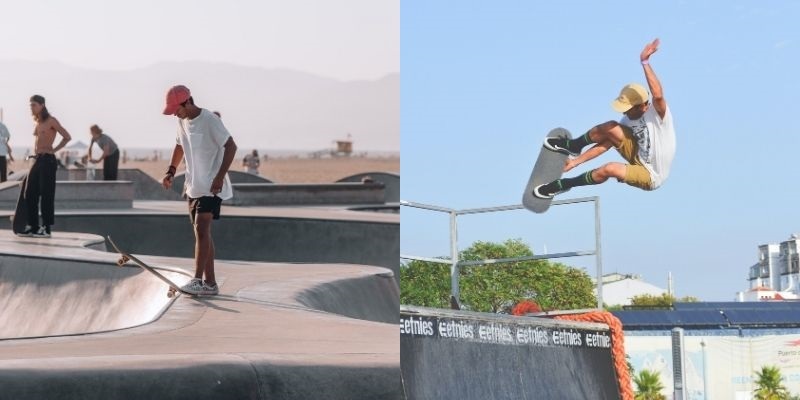
Designed for tricks on quarter pipes, half pipes, and bowls with steep transitions, transition skateboards cater to vert skating, known for executing massive air tricks on large half pipes, requiring nerves of steel even to initiate a drop-in.
Pool and bowl skateboarding is a unique subcategory of transition skateboarding, with historical roots in skating empty swimming pools, eventually evolving into purpose-built skate bowls.
Transition skateboards, whether for pools or vert, frequently have larger wheels and decks than street setups, which aids in achieving higher speeds and performing larger tricks. In transition setups, large wheelbases provide additional stability and control, although a reduced turning radius might be preferable for tighter pool and bowl carving actions.
Street Skateboards
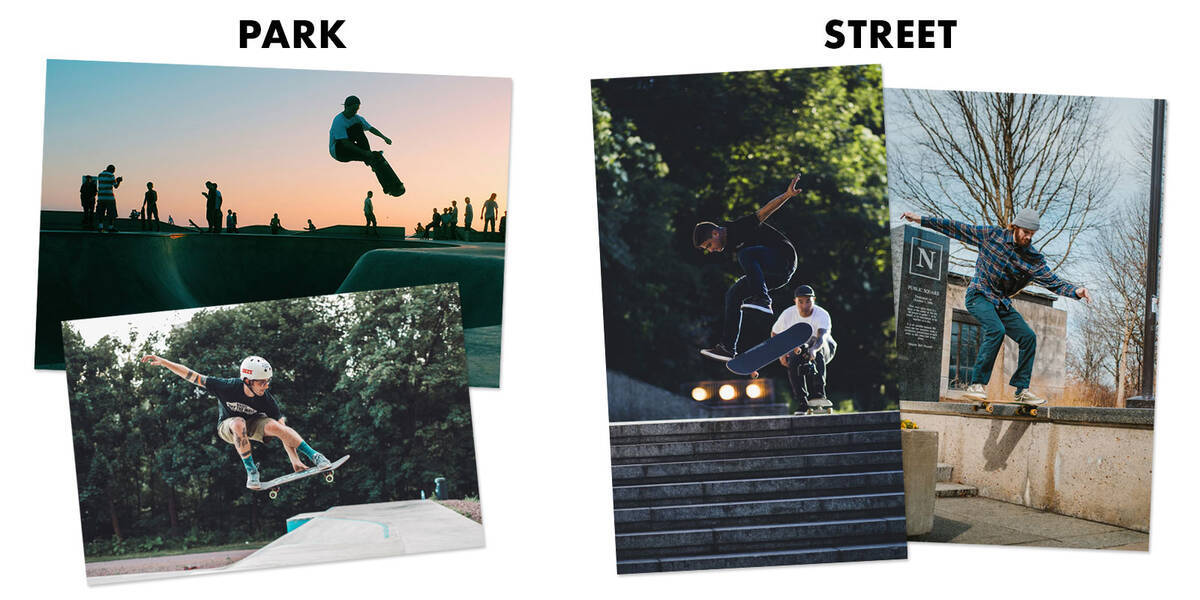
Typically narrower and lower than transition skateboards, street skateboards feature smaller, harder wheels offering better handling, making them suitable for tricks and maneuvers requiring quick response and durability.
Street skating is often credited with popularizing the double kicktail design, evolving into the standard popsicle deck shape. The double kicktails enable a range of tricks, including those performed in fakie or nollie positions.
Street skating involves creatively transforming urban infrastructures like staircases and railings into means of personal expression. The interplay between street skateboarders and urban architecture has persistently propelled the sport in novel directions from the late '80s and early '90s.
Park Skateboards
Your park skateboard setup hinges on your personal tastes and preferences alongside the characteristics of your most frequented skate park. Skateparks vary extensively, encompassing an assortment of obstacles from ramps and rails to bowls and verts.
With surfaces ranging from concrete, asphalt, to wooden, and park sizes varying between expansive competition arenas and small social skate spots, tailor your setup to your specific park's conditions. In parks with particularly slick surfaces, selecting wheels with a slightly softer durometer may improve grip and steering abilities.
Complete vs. Custom Skateboards: Are Complete Boards a Good Choice for Intermediate Skaters?
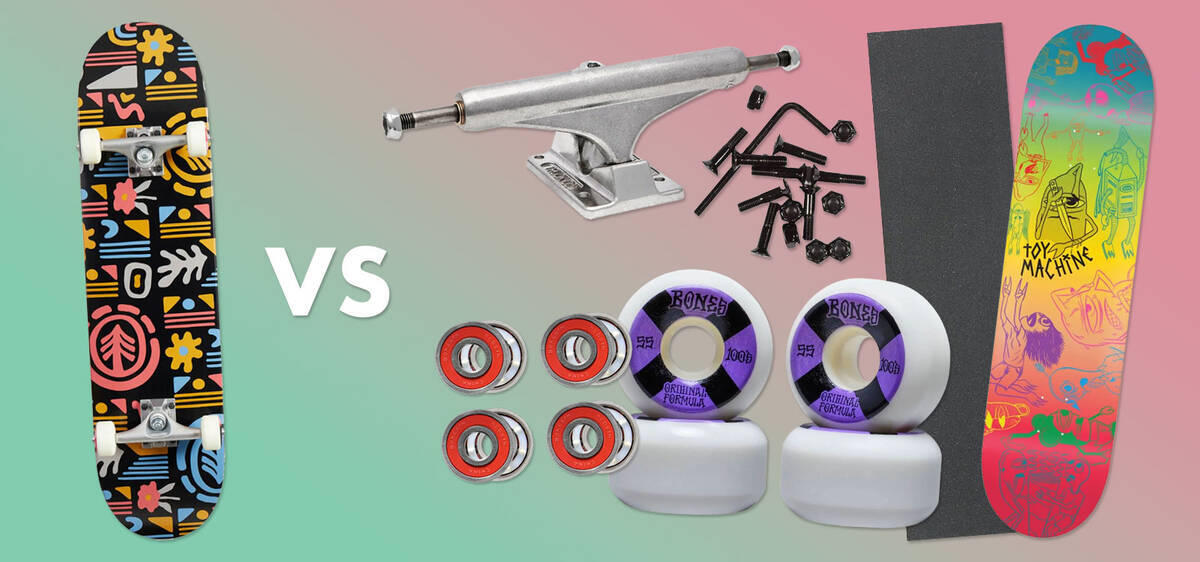
For an intermediate skateboarder in need of entirely new gear, a complete skateboard may prove beneficial. It is, however, important to ensure that it aligns with your specific requirements and comprises quality components.
Although complete skateboards generally offer inferior parts compared to bespoke options, they are more economical. If electing a complete skateboard, prioritize reputable brands and specifications such as deck width, preferred wood type (avoiding Chinese maple), wheel diameter, wheel hardness, and truck manufacturer to ensure durability and performance.
If assembling a skateboard independently, each component is selected to your specific preferences. Some parts of your chosen setup might wear faster than others, thus customizing becomes essential.
Part longevity heavily depends on your skate style. Frequent grinds accelerate truck wear, while powerslides abrade wheels, with decks commonly wearing out fastest, requiring frequent replacement.
Recognizing When It's Time to Replace Your Skateboard Deck

You should consider replacing a deck once it begins chipping, delaminating, or loses its snappy feel. Even without visible defects, decks can still lose tension and compromise the skateboarding experience. Ultimately, a new skateboard deck is warranted when you believe it will enhance your performance and enjoyment.
Selecting the Right Skateboard Deck
Choosing the ideal skateboard deck involves considerations beyond aesthetics. Critical determinants of performance and comfort include size, shape, concave, and wood type, each interacting with your skating style and preferences.
- Size: Opt for a size that complements your shoe size and skate style, while ensuring the deck width aligns with your trucks’ axle width.
- Wood Type: Intermediate skateboarders should avoid softer woods like Chinese maple, with 7-ply maple generally being ideal.
- Concave: Concave refers to the deck's lateral curvature, influencing the board's feel and footlock security while riding.
For expert guidance on deck selection:
Durability of Skateboard Trucks: When to Replace?

Generally durable, high-quality skateboard trucks may last years; however, signs that it's time for new ones include worn hangers disrupting grinds or stalls, or axle exposure through excessive grinding. Breaking a kingpin may warrant replacement although replacing just the kingpin can restore function. If bushings wear down before trucks do, consider fresh bushings for a revamped experience. Always adjust your trucks by modifying the kingpin nut tightness!
Browse our range of trucks and parts for skateboards:
Picking the Ideal Skateboard Trucks
When acquiring new skateboard trucks, keep these aspects in mind:
- Size: Ensure truck width is compatible with your deck width for stability and to prevent shoe interference during tricks.
- Truck Height: Determine whether you prefer low, mid, or high trucks depending on your balance preference, wheel clearance needs, and control.
- Truck Weight: Consider the weight, as lighter trucks can be beneficial for tricks, bearing in mind the size-weight correlation.
For more insights into skateboard truck selection, refer to our guide:
Timing Your Skateboard Wheel Replacement
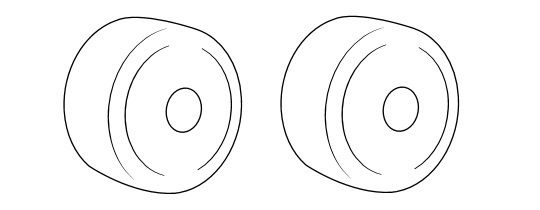
While sturdy, skateboard wheels eventually degrade, evident in size reduction or patchy wear leading to flat spots. These can disrupt riding, indicating it might be time for replacements.
Wheels often wear faster on the outer edge, reducing the riding surface or contact surface. Regularly rotating skateboard wheels by cross-swapping (front right to rear left, and vice versa) prolongs even wear across all wheels.
Opting for the Right Skateboard Wheels
Consider these factors when buying skateboard wheels:
- Size/Diameter: Choose appropriate wheel dimensions based on skating style and terrain. Smaller wheels provide nimbleness, larger ones offer stability and speed.
- Hardness (Durometer): Select the correct durometer for your skating surface and preference of grip versus slide. Softer wheels offer better grip and shock absorption, while harder wheels deliver speed and durability.
- Shape and Contact Patch: Take into account wheel shape and contact patch size. Narrow patches improve responsiveness for tricks, whilst wider patches enhance grip and stability.
For more comprehensive advice on skateboard wheels:
Deciding on Skateboard Size: How to Determine the Right Fit?
In order to choose the appropriate skateboard deck size, it's crucial to match the width to your foot size and skating style. The feeling while skating is significantly affected by deck width. Consulting a size chart is valuable in deciding whether a narrower or broader deck is best depending on your shoe size. A deck that is too slim might seem shaky, while one that is excessively wide can hinder manoeuvrability. Generally speaking, if your shoes are European size 45 or bigger, selecting a deck of at least 8 inches in width is advisable to ensure proper landings when performing tricks.
Your personal skating style and preferences are crucial considerations in selecting the deck size. Skaters who are into pool or vert styles will likely favour a wider deck than the chart suggests.
| Skateboard Width | Recommended Age | Shoe size US | Shoe size UK | Shoe size EU |
| 6.5" | 3 - 5 | 6C - 11C | 5Y - 10Y | 23 - 28 |
| 6.75" | 3 - 5 | 7C - 11C | 6Y - 10Y | 24 - 28 |
| 6.825" | 4 - 6 | 9C - 12C | 8Y - 11Y | 26 - 30 |
| 7.0" | 5 - 7 | 10C - 1 | 9Y - 12Y | 28 - 32 |
| 7.125" | 6 - 8 | 11C - 2 | 10Y - 1 | 29 - 33 |
| 7.25" | 7 - 9 | 12C - 3 | 11Y - 2 | 30 - 34 |
| 7.375" | 8 - 10 | 13C - 4 | 12Y - 3 | 31 - 35 |
| 7.5" | 9 - 11 | 1 - 6 | 13Y - 5 | 32 - 38 |
| 7.625" | 10 - 12 | 2 - 7 | 1 - 6 | 33 - 39 |
| 7.75" | 12 - 14 | 4 - 9 | 3 - 8 | 35 - 42 |
| 7.875" | 12 - 14 | 4 - 9 | 3 - 8 | 35 - 42 |
| 8" & Up | 14 & Up | 9 & Up | 8 & Up | 42 & Up |
Explore our detailed guide:

